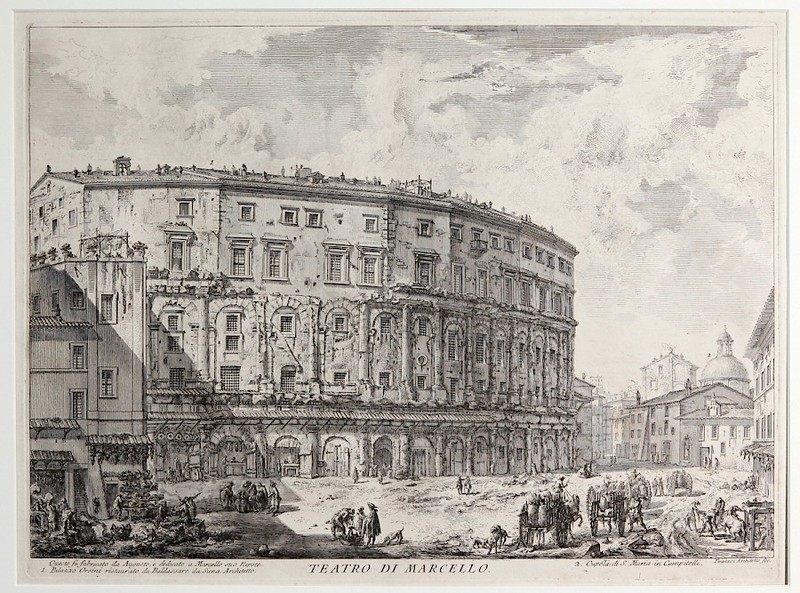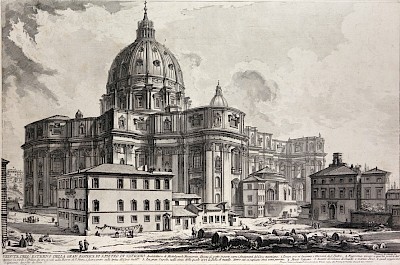The Art Market

Giovanni Battista Piranesi, The Theatre of Marcellus (Teatro di Marcello), 1757, etching (Davidson Galleries)

Giovanni Battista Piranesi, Veduta dell' Esterno della Gran basilica di S. Pietro in Vaticano (St. Peter's, from the Piazza della Sagrestia), 1748, etching (Davidson Galleries)
Piranesi started his career in Rome with the traditional, local trade of view making, or vedutismo. Piranesi brought to Rome the painterly techniques of Venetian landscape painting he had learned as a young man.30 A common means of livelihood for an architect in Rome was the production of these views, or vedute, as they generated good income, serving as souvenirs for the Grand Tourists. When Piranesi first began etching views as a means of financial support in the early 1740s, there were already signs in his earliest plates of a new approach to capturing Roman architecture. This approach combined the anatomically correct view of a monument with the dramatic impact and emotional experience the view had on the spectator. Emotional experience was a new consideration for artists in the 18th century. There is evidence in Piranesi’s views of a far freer approach towards the medium of etching than in the work of his competitors.31 In the view of the Theatre of Marcellus, the etched clouds appears painterly and smooth, not like traditional engraving, and in the view of St. Peter’s Basilica, Piranesi has purposely misrepresented scale and proportion in order to replicate the intense emotional experience of what is would be like to view the Basilica in person. The emotional experience Piranesi created within his vedute was unique; it allowed tourists to take back not only a remembrance of what an ancient monument looked like, but the feeling they had when seeing the structure for the first time.
As a leading vedutista in Rome with a growing clientele of foreign patrons, Piranesi set up his own printmaking business in Palazzo Tomati in 1760. In 1769 Piranesi found a ready market for his vedute among the host of foreign clients in Rome.32 Piranesi catered to and engaged with antiquarians and archaeologists, European and American audiences, members of the Republic of Letters, Grand Tourists, royalty, and fellow artists and architects.33 Piranesi used unique strategies to set taste and control the vedute market. He was a businessman who outperformed the competition by the sheer numbers of plates he produced and by reworking a single plate several times to create new versions of it quickly and cheaply. At the time, his work dominated the Italian market and even today his engravings are ubiquitous.34
__________________________________________________________________________________
30Mayor, “Piranesi,” 280.
31Lucchi, Lowe, Pavanello, The arts of Piranesi, 34.
32Denison, Rosenfeld, Wiles, Exploring Rome: Piranesi and his contemporaries, 39.
33Rosenfeld, Myra Nan. "The Serpent and the Stylus: Essays on G. B. Piranesi." Memoirs of the American Academy in Rome. Supplementary Volumes 4 (2006): 55-91.
34Donato, “Fresh Legacies,” 508-511